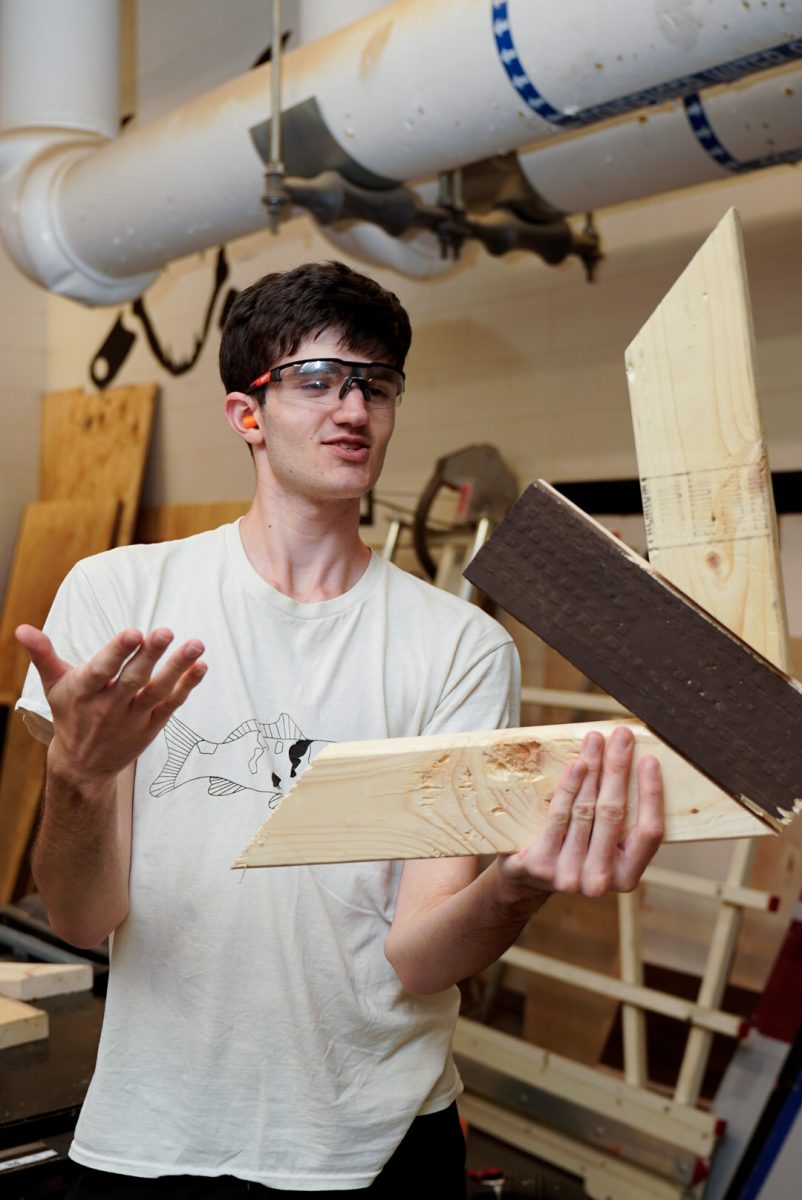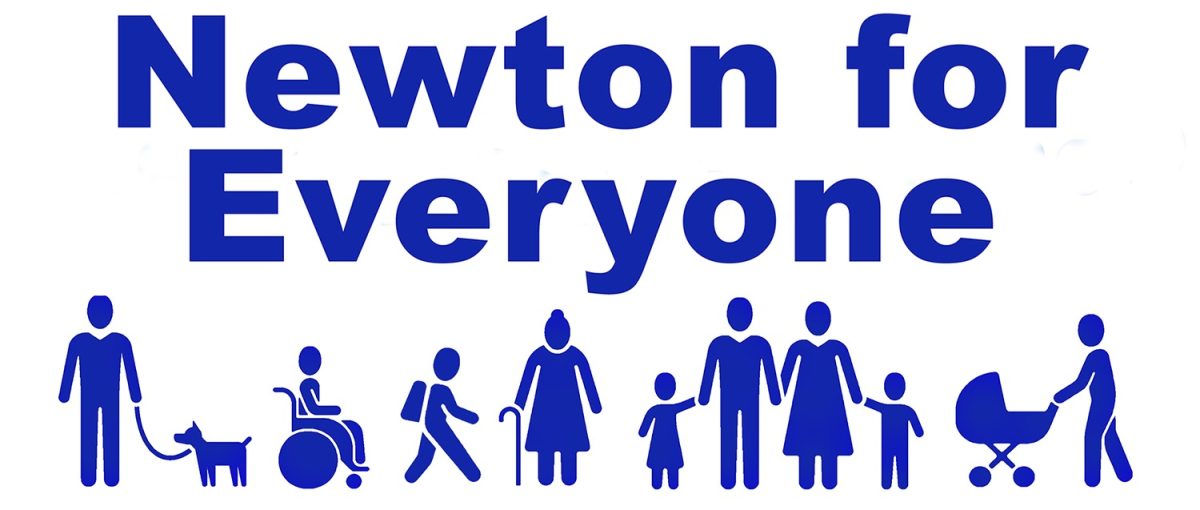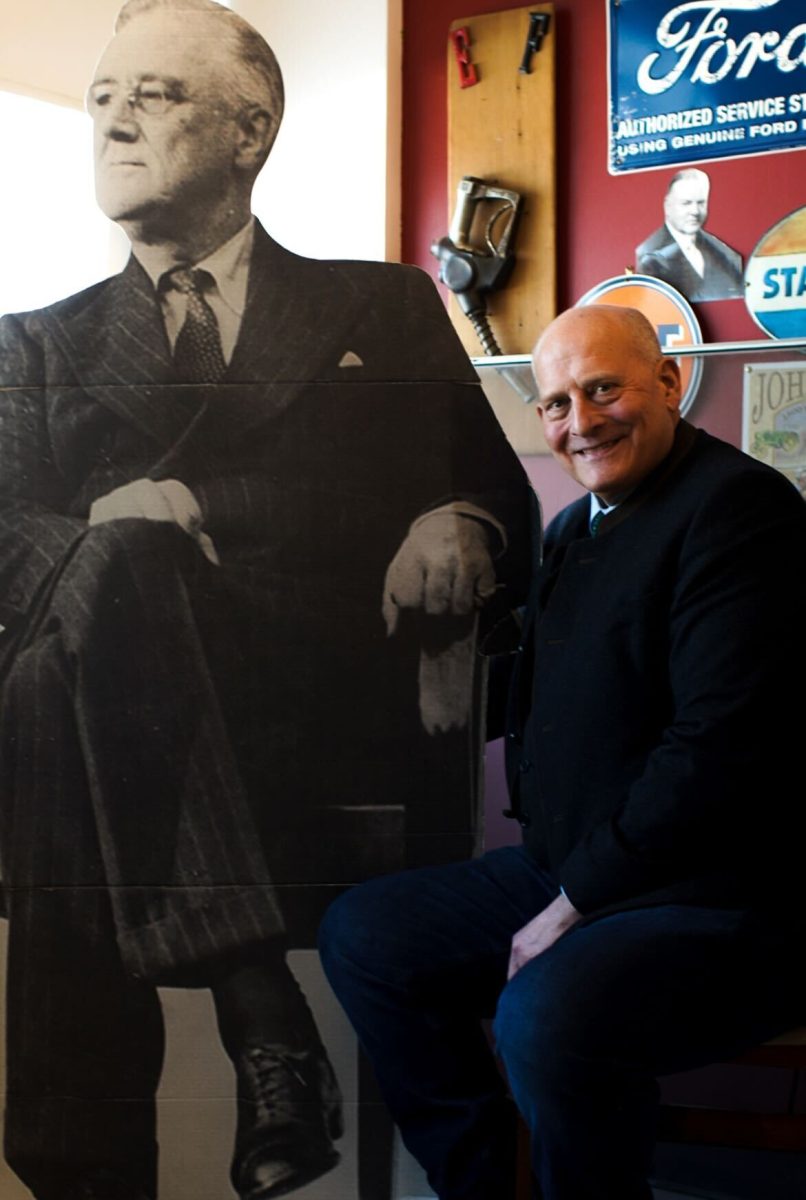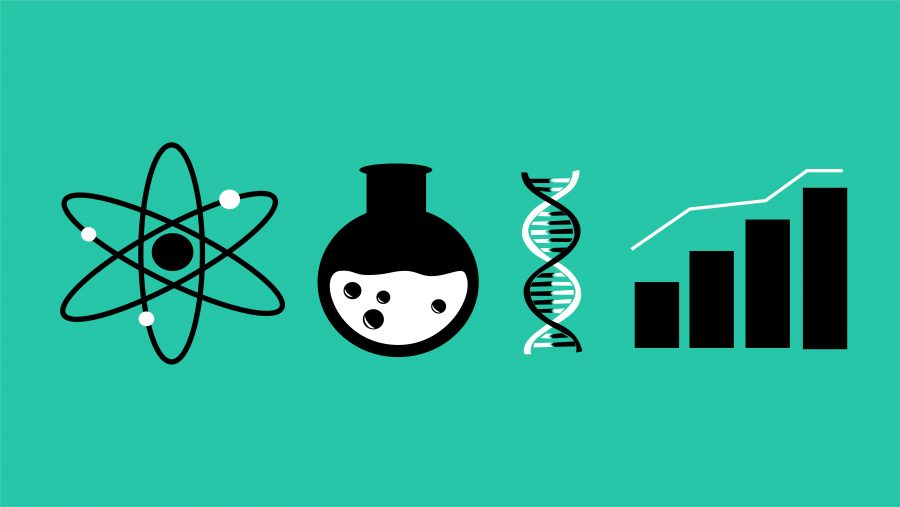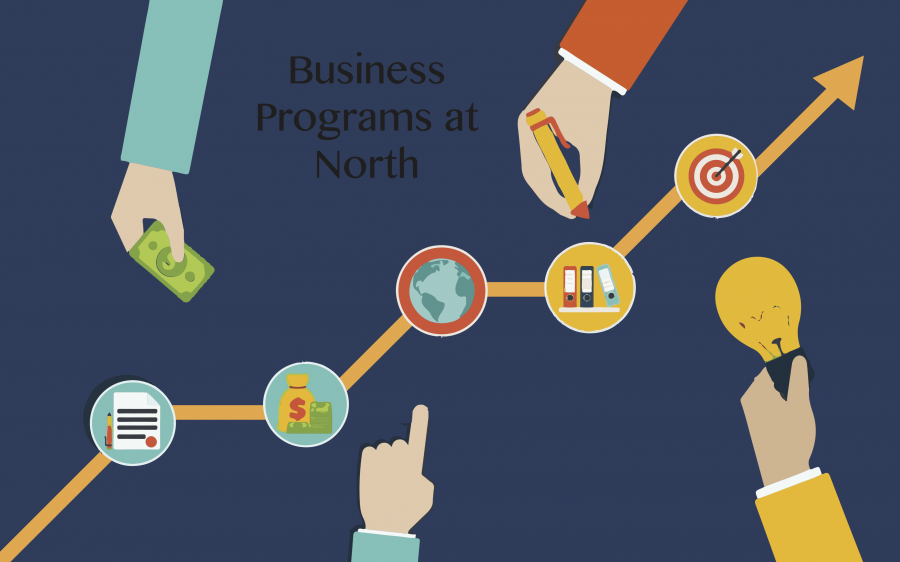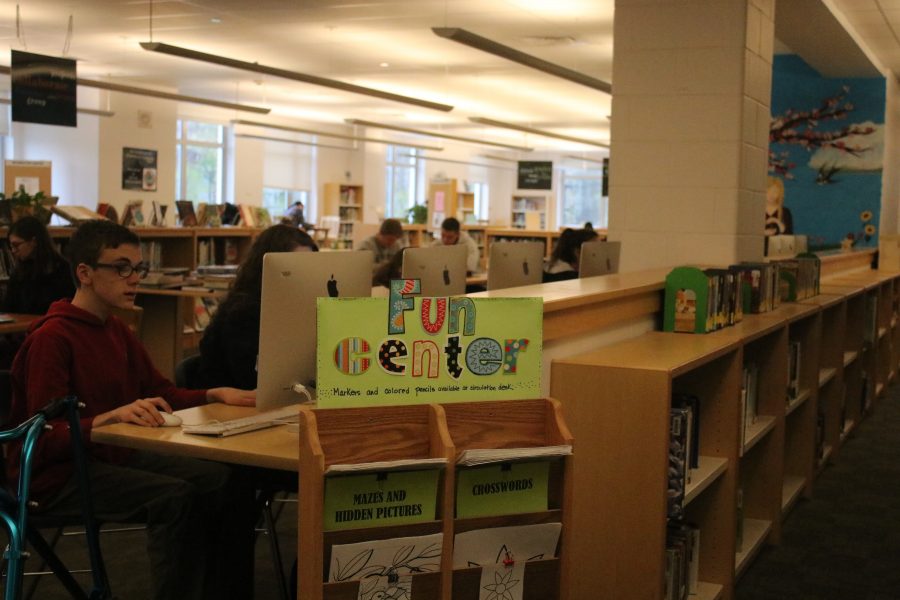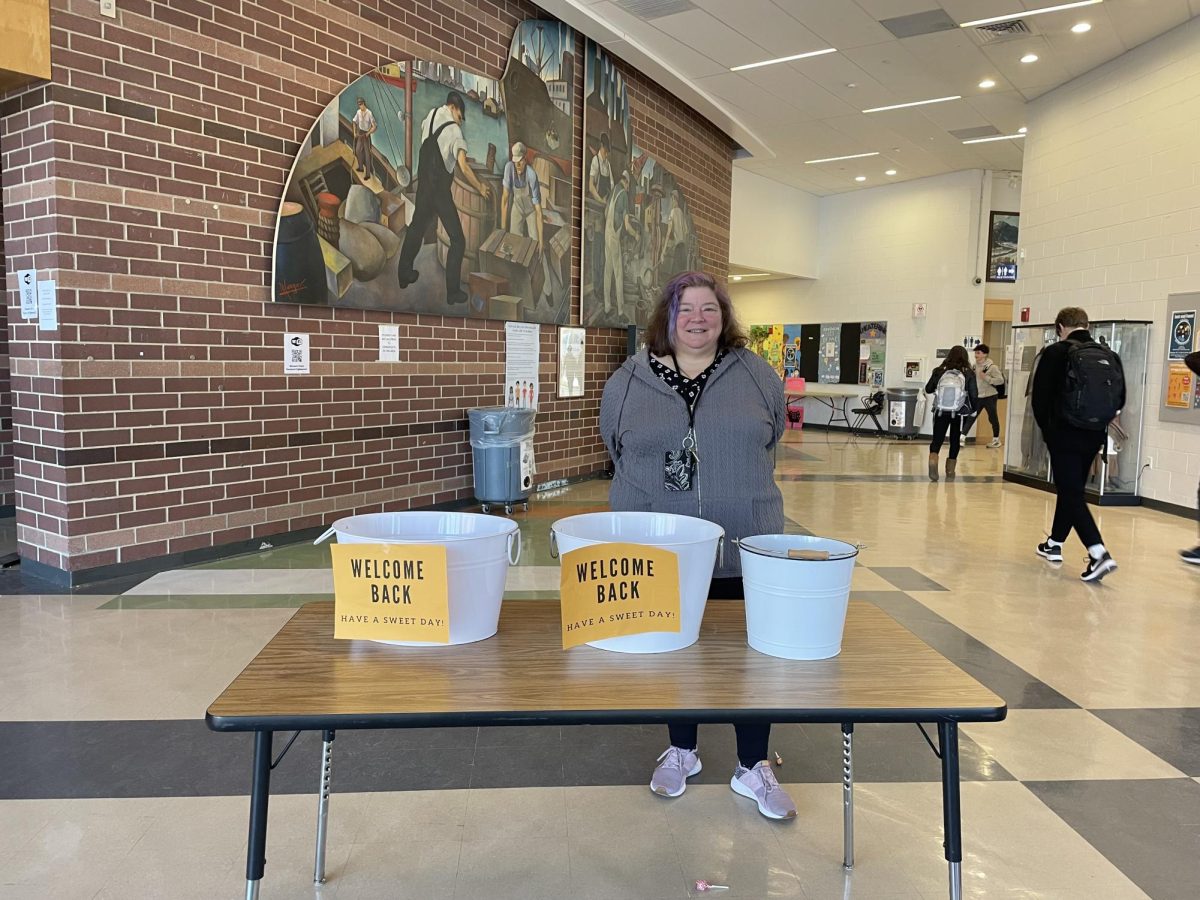For two weeks each May, orderly rows of tables span the Simulated Outdoor Area. Students sit in chairs, and Advanced Placement (AP) test booklets lay in front of them, as the sound of pens writing on lined paper and pencils bubbling in scantron answer sheets fills the room for the three-hour duration of exams.
For nearly a century, standardized testing has been administered to high school students across the US. The first SAT exam was proctored in 1926. Years later, the ACT and AP exams were also created. These exams were all given on paper, as they preceded the advent of computers.
However, in recent years, standardized testing has shifted toward a digital format, changing the style of the exams that has been widespread for years.
The SAT became digital internationally beginning in March 2024, eliminating the paper version of the test. Last February, the ACT allowed some students to take its exam digitally, which will become an option at more testing locations over time. Starting this May, 28 AP exams will be taken in a fully digital or hybrid format.
Digital testing offers numerous advantages to high school students. The digital SAT is shorter than the paper SAT. The digital test lasts slightly over two hours compared to the three-hour paper test that was proctored before.
“There are pros with writing in a digital format because you can go back to previous paragraphs and edit or add more information in a way that isn’t as obstructive,” said senior Ava Qiu. “It makes writing a lot easier in general because I feel less pressure in writing that first sentence because I know I can just delete it, whereas if I was doing it physically, I’m going to have to scribble the whole thing in pen.”
Digital testing may also improve student accessibility. According to the ACT website, online testing provides additional accessibility features, including support for screen reader users, text-to-speech functionality, zoom, and answer masking.
English teacher Beth Cronin, who teaches AP English Literature and Composition, sees benefits in the digitization of AP exam writing. According to Cronin, “The task of writing an essay on paper is a very challenging task, so it may be that this will be helpful to students who have handwriting issues or are just more used to writing electronically.”
With the increased use of technology in schools amid the digital age, students are used to using technology. According to the College Board Newsroom, “95% of students felt comfortable testing on their digital device.” Transitioning from handwritten to online testing also reduces the negative impact of paper test booklets on the environment.
However, there are also potential downsides to switching to digital exams. While using computers and technology during school is common, certain aspects of testing are lost with the switch to digital exams.
“I do not personally like the transition. I find reading easier from paper, and annotating using pen and pencil would be very helpful,” said senior Paul Nelson. “This aspect of test taking is arguably part of the student’s skill set, so the fact that they aren’t allowed to do that means the test doesn’t represent their capabilities as fully.”
Qiu agreed. “On the digital SAT, you lose out on the benefits of having a physical copy of the text in front of you and being able to annotate and highlight,” said Qiu. “While you can do those functions on a computer, too, they are pretty unreasonable, especially when we’re on a timer, and you have to click on a button and type out your note on the text. Then, if you want to read what you wrote, you have to click on the text again to read it,” she added.
According to Nelson, the math section has become substantially more challenging than it was before the switch to digital testing. The digital SAT adapts the difficulty of its second math and English modules depending on how students perform on the first ones.
Other concerns about digital testing include technological difficulties, such as internet connection and battery life.
“I think the main challenges are all going to be pragmatic challenges of making it work for the number of machines on Wifi and making sure everyone’s machines are charged and have access to the right software,” said history teacher Peter Turner, an AP United States History teacher. “But, once we get over that learning curve, I think everything will be good,” Turner said.
Technological inequality may also pose a problem, as students may have different experiences with digital learning.
According to the Carnegie Corporation of New York, “Sixty-five percent of families below the federal poverty line report that in the last year their child either couldn’t participate in class, was prevented from completing their schoolwork, or had to participate over the phone because they lacked access to a computer,” based off of a survey conducted by New America.
Test takers whose families were in the top 20 percent of earners were seven times as likely as those in the bottom 20 to score at least a 1300 on the SAT, according to data from economists at Opportunity Insights, based at Harvard, in an article by The New York Times.
Transitioning to digital tests may further increase this gap. According to a 2019 study in the Economics of Education Review, students who took digital tests for the first time performed significantly poorer compared to when the same students took paper tests. Those with learning disabilities and those coming from low-income families suffered the most, performing the lowest out of all students.
“The transition to computers seems to take away from the human aspect, which I don’t like,” said Nelson. “Seeing people lined up in a room staring at screens provides much less room for uniqueness than taking the test on paper: how you hold the pencil, your handwriting, and your annotations are all opportunities to express your uniqueness.”
Computers have already begun filling up classrooms as students take the new SAT and ACT. Next May, several AP test booklets will also be traded with digital devices, and the sound of pencil on paper will be replaced by that of the clattering of keyboards.

